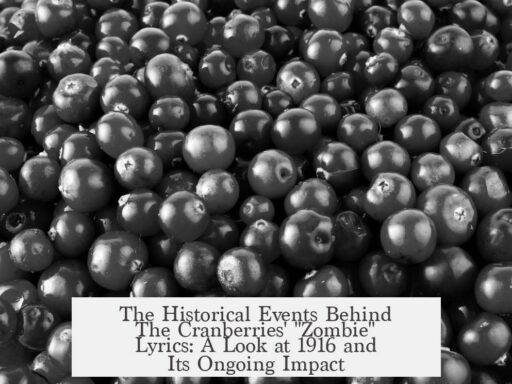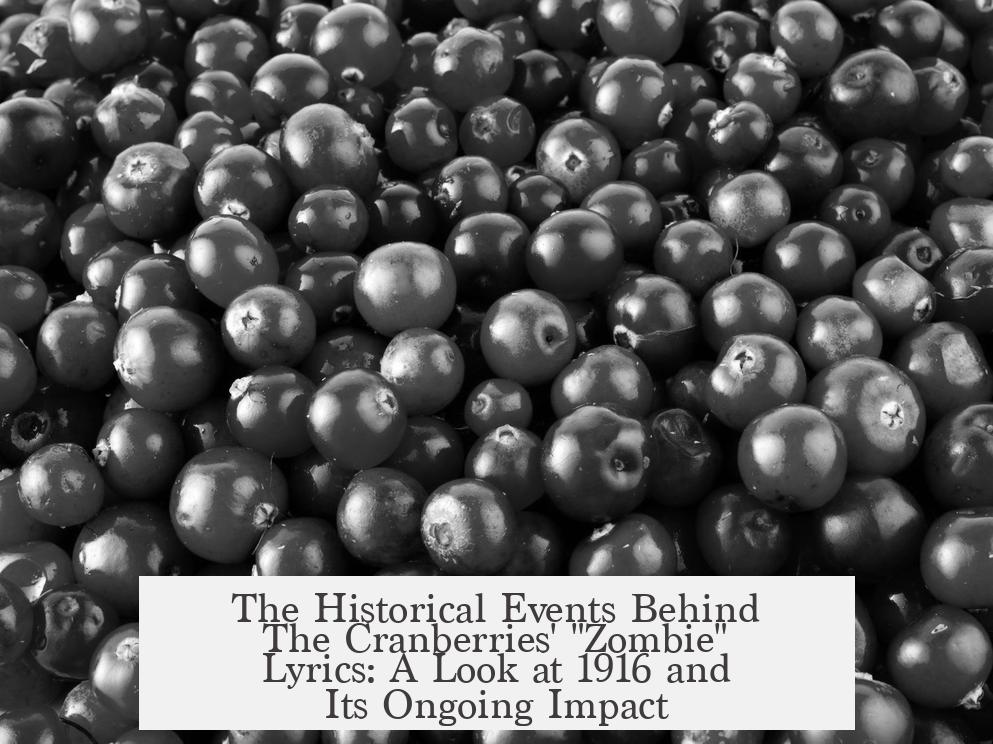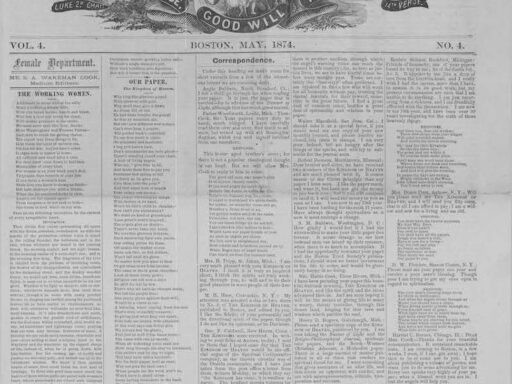The phrase “It’s the same old theme, since 1916” in the Cranberries’ song “Zombie” refers to the recurring cycle of violence rooted in the Easter Rising of 1916. This event marks a significant point in Irish history, symbolizing the start of prolonged conflict between Irish Republicans and British Unionists, which the song highlights as an ongoing tragedy.

The Easter Rising was a rebellion by Irish Republicans who sought to end British rule in Ireland and establish an independent Irish Republic. This armed insurrection took place in April 1916 and is considered the opening chapter of the Irish Revolutionary Period. It sparked a chain of events that deeply influenced Ireland’s political landscape.
The rebellion was suppressed by British forces with harsh measures, which fueled public sympathy for the Irish Republican cause. In the years that followed, this repression and resistance escalated into the Irish War of Independence (1919-1921), leading to the partition of Ireland. The island was divided into the independent Republic of Ireland and Northern Ireland, which remained part of the United Kingdom.

This division sowed the seeds of enduring sectarian conflict, known as the Troubles, primarily in Northern Ireland. The Troubles, spanning from the late 1960s to 1998, were marked by violent clashes between nationalist/republican and unionist/loyalist groups, as well as security forces. “Zombie” directly responds to this violence, condemning the perpetuation of bloodshed and suffering.
By referencing 1916, the song connects the present conflict to its historical root, emphasizing how the struggle, unrest, and tragedy are not sudden but embedded in a long, painful history.

- The 1916 Easter Rising initiates a cycle of violence in Irish history.
- It leads to the Irish War of Independence and partition of Ireland.
- The partition creates lasting division, fueling ongoing conflict.
- “Zombie” links current violence to historical political strife.
- The line underlines recurring themes of war and loss over decades.
What Events Are Referenced in The Cranberries’ Song “Zombie” When It Says “It’s the Same Old Theme, Since 1916”?
The lyrics “It’s the same old theme, since 1916” in the Cranberries’ song “Zombie” reference a long history of conflict rooted in the Easter Rising of 1916. This phrase hammers home the idea that violence in Ireland isn’t new; it’s part of a vicious cycle stretching back generations. But why 1916? And how does it tie into the larger story behind this iconic alternative rock anthem?

The song “Zombie” bursts with raw emotion and anger. It responds directly to a tragic event: the 1993 Warrington Bombings. These bombings were carried out by the IRA (Provisional Irish Republican Army) in Warrington, England, killing two innocent children—a shocking loss of life that haunted Dolores O’Riordan and sparked the song’s creation. The Cranberries have openly called “Zombie” a cry against “man’s inhumanity to man; and man’s inhumanity to child,” making it clear how personally they felt the pain of this event.
But these bombings were just one brutal episode in a long, complex saga known as “The Troubles.” This was a violent, decades-long conflict between Irish nationalist Republicans, who wanted Ireland united as a sovereign republic, and British Unionists in Northern Ireland, who wished to remain part of the United Kingdom. The Warrington Bombings captured international attention but were part of the larger, grim backdrop of The Troubles.

The Grim Legacy of 1916: The Easter Rising
When the Cranberries sing “It’s the same old theme, since 1916,” they are referencing the Easter Rising, a massive rebellion against British rule in Ireland that took place during Easter Week in April 1916. This uprising is often considered the violent spark that ignited the Irish Revolutionary Period, a turbulent era when Ireland fought for independence.

The Easter Rising isn’t just an isolated historical event; it’s the root cause of decades of bitterness, bloodshed, and political division. To understand the song, you must understand the significance of 1916.
The rebels, mainly Irish Republicans, staged the uprising in Dublin. Their goal? To establish an independent Irish Republic, free from British control. The rebellion was quickly suppressed by British forces, and its leaders were executed, but the event galvanized Irish nationalism. It set off a chain reaction, leading to the Irish War of Independence (1919-1921). The British response to rebellion, including harsh crackdowns, fed the fire rather than dousing it.

From Easter Rising to Partition: The Seeds of Division
The War for Independence, born out of the tensions caused by the 1916 Easter Rising and its aftermath, culminated in the partition of Ireland in 1921. This created two separate entities: the Republic of Ireland, an independent nation, and Northern Ireland, which remained a province within the UK. This division institutionalized political and sectarian strife, eventually leading to The Troubles decades later.
This is the direct lineage of violence and grief that “Zombie” mourns and condemns. The song laments not just one bombing or one era but an inherited conflict passed down since 1916, where the cycle of violence repeats itself over and over.
Why 1916 Matters for Today’s Listeners
You may wonder: why bring up history from over a century ago in a song released in 1994?
The song’s power lies in acknowledging that the bombings and killings of the 1990s didn’t happen in a vacuum. They’re part of a decades-long cycle rooted in deep historical wounds. Dolores O’Riordan points out how violence becomes a recurring “theme,” echoing through generations. Bombings, wars, and bloodshed come from unresolved political and cultural conflicts stretching all the way back to the Easter Rising.
“Zombie” isn’t just a protest against a single act of terror; it’s a fierce critique of how that same conflict keeps popping up, with more innocent lives lost every time. In this way, the song forces listeners to reckon with how history shapes present-day strife. It asks, implicitly, when will the “same old theme” end?
Lessons from the Song and Context
- Understanding History Matters: To grasp the full weight of the tragedy behind “Zombie,” you need to understand the layered history of Irish-British relations. The Easter Rising is a linchpin.
- The Long Shadow of Conflict: The Troubles and the 1993 bombings are symptoms of a much older problem that hasn’t been fully resolved.
- Human Cost: The song emphasizes innocent casualties, especially children, highlighting the needless suffering caused by repeated violence.
- A Call for Reflection: “Zombie” invites listeners not just to mourn but to question the cycle of violence and think about how it might finally be broken.
In Conclusion
The Cranberries’ “Zombie” is a powerful musical case study of how modern conflicts often have deep historical roots. The line “It’s the same old theme, since 1916” connects a 1990s tragedy to the century-old Easter Rising and subsequent events that carved Ireland’s political landscape into a battleground. The song channels frustration over the endless cycle of violence sparked nearly 80 years earlier. Understanding this history enriches the song’s meaning and reveals why it still resonates decades later. It’s an angry plea for peace framed by the shadows of past wounds, proving that sometimes history, no matter how old, refuses to stay buried.
What does the lyric “It’s the same old theme, since 1916” refer to in the song “Zombie”?
The lyric references the Easter Rising of 1916, an armed insurrection by Irish Republicans against British rule. This event marked the start of a long history of conflict in Ireland.
How is the Easter Rising connected to the themes in “Zombie”?
The Easter Rising set off decades of violence, including the Irish War of Independence and the division of Ireland. “Zombie” highlights the continued cycle of violence caused by these historical conflicts.
Why is 1916 significant in the context of Irish history and the song?
1916 marks the year of the Easter Rising, which began the struggle for Irish independence. The song uses this date to show that the conflict has lasted for many years, with repeated violence.
What ongoing conflicts does the song link to the events of 1916?
The song ties the Easter Rising to the later Irish Troubles, a period of sectarian violence. It suggests the conflict is unchanging and still affects people today.
Does “Zombie” blame the violence solely on the events of 1916?
No, it points to the Easter Rising as a starting point for ongoing violence. The song expresses frustration that the cycle of violence continues despite many years passing.




